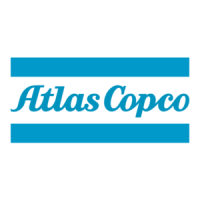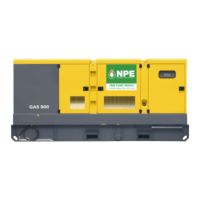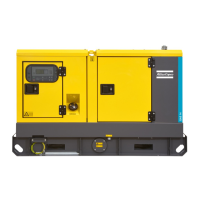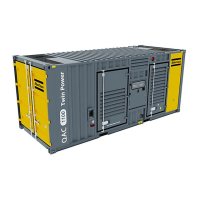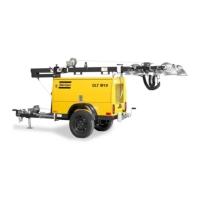28 2954 2100 01
QAS 14 - 20 Pd
3. Operating instructions
3.1 Installation
– Place the generator on a horizontal, even and solid floor.
– Protect the generator against dust and rain if it is operated outside.
– Check that the engine exhaust is not directed towards people. If the
generator is operated indoors, install an exhaust pipe of sufficient
diameter to duct the engine exhaust towards the outside. Check for
sufficient ventilation so that the cooling air is not recirculated. If
necessary, consult Atlas Copco.
– Leave enough space for operation, inspection and maintenance (at
least 1 meter at each side).
– Check that the inner earthing system is in compliance with the local
legislation.
– Use coolant for the engine cooling system. Refer to the Engine
instruction book for the proper coolant mixture.
– Check the tightness of the bolts and nuts.
– Install the earthing rod as near as possible to the generator and
measure its diffusion resistance (max. 1 kΩ) in order not to have a
contact voltage higher than 25 V at 30 mA leakage current.
– Check that the cable end of the earthing rod is connected to the earth
terminal.
3.2 Connecting the generator
3.2.1 Precautions for non-linear and sensitive
loads
The most common non-linear, 3-phase loads are thyristor/rectifier-
controlled loads, such as convertors supplying voltage to variable
speed motors, uninterruptable power supplies and Telecom
supplies. Gas-discharge lighting arranged in single-phase circuits
generate high 3rd harmonics and risk for excessive neutral current.
Loads most sensitive to voltage distortion include incandescent
lamps, discharge lamps, computers, X-ray equipment, audio
amplifiers and elevators.
Consult Atlas Copco for measures against the adverse influence of
non-linear loads.
3.2.2 Quality, minimum section and
maximum length of cables
The cable connected to the terminal board of the generator must be
selected in accordance with local legislation. The type of cable, its
rated voltage and current carrying capacity are determined by
installation conditions, stress and ambient temperature. For flexible
wiring, rubber-sheathed, flexible core conductors of the type
H07 RN-F (Cenelec HD.22) or better must be used.
The following table indicates the maximum allowable 3-phase
currents (in A), in an ambient temperature of 40 °C, for cable types
(multiple and single core PVC insulated conductors and H07 RN-F
multiple core conductors) and wire sections as listed, in accordance
with VDE 0298 installation method C3. Local regulations remain
applicable if they are stricter than those proposed below.
The lowest acceptable wire section and the corresponding
maximum cable or conductor length for multiple core cable or H07
RN-F, at rated current (20 A), for a voltage drop e lower than 5 %
and at a power factor of 0.80, are respectively 2.5 mm² and 144 m.
In case electric motors must be started, oversizing the cable is
advisable.
In your own interest, always strictly observe all rele-
vant safety instructions.
Do not operate the generator in excess of the limita-
tions mentioned in the Technical Specifications.
Local rules concerning the setting up of low voltage
power installations (below 1,000 V) must be
respected when connecting site distribution panels,
switch gear or loads to the generator.
At each start-up and at any time a new load is con-
nected, the earthing of the generator must be veri-
fied. Earthing must be done either by the earthing
rod or, if available, by an existing, suitable earthing
installation. The protective system against excessive
contact voltage is not effective unless a suitable
earthing is made.
The generator is wired for a TN-system to IEC 364-
3, i.e. one point in the power source directly earthed
- in this case the neutral. The exposed conductive
parts of the electric installation must be directly con-
nected to the functional earth.
If operating the generator in another power system,
e.g. an IT-system, other protective devices required
for these types must be installed. In any case only a
qualified electrician is authorized to remove the con-
nection between the neutral (N) and earth terminals
in the terminal box of the alternator.
!
Non-linear loads draw currents with high contents
in harmonics, causing distortion in the wave form of
the voltage generated by the alternator.
Wire section (mm²) 2,5 4 6 10 16 25 35 50 70 95
Max. current (A)
Multiple core 22 30 38 53 71 94 114 138 176 212
Single core 25 33 42 57 76 101 123 155 191 228
H07 RN-F 21 28 36 50 67 88 110 138 170 205
!
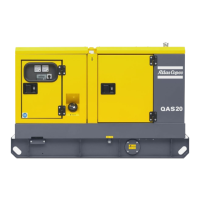
